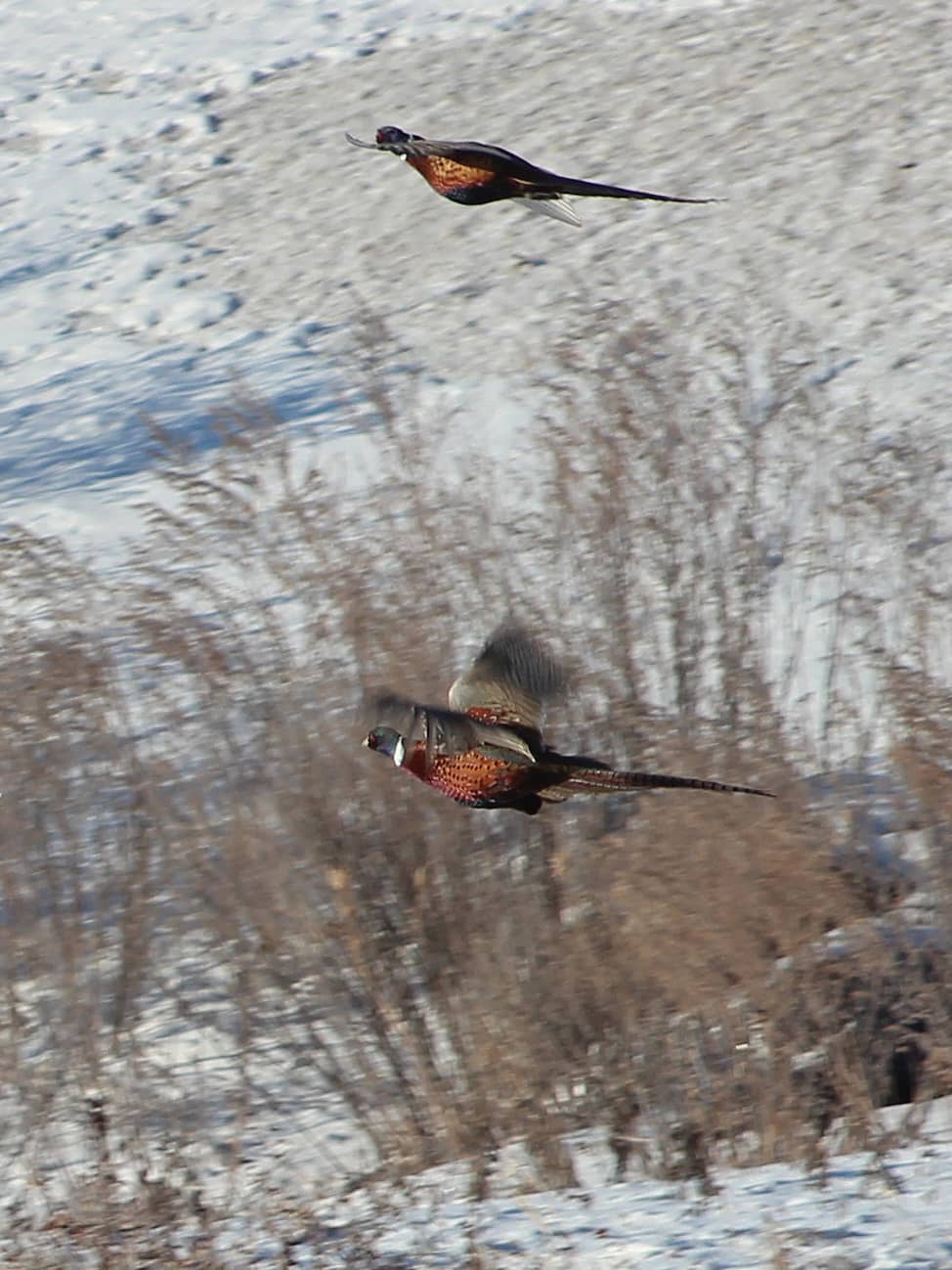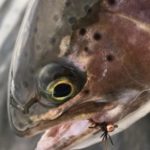
Seeing where birds will relate in late season comes with experience in the field. Simonson Photo.
By Nick Simonson
I’ve often wondered if I could give up hunting and just fish or give up fishing and just hunt.
I’m most often stuck with that thought as I sit peacefully in my deer stand up from a small lake and listen to the last anglers of the season drop their boats off the launch at first light for the aggressive autumn trout that occupy the chilly waters. Ever a victim of FOMO, or the fear of missing out, I find myself caught in the internal debate of which is better, which would I do if I had to choose or was stuck on the proverbial desert island that only allowed for one for the rest of my life. Thankfully, I don’t have to make that choice, and both options, which are approached usually quite differently, test my skills in many ways, but always come down to a matter of vision, and not necessarily my own.

Hunting, especially that of any camouflage variety – archery, waterfowl, predator – requires the ability to go unseen, to blend in with the environment surrounding your position and stay still long enough for the chosen quarry to come close enough for a shot at success. That’s the greatest challenge I find in hunting, of going unseen and more importantly staying unseen (and unheard and unsmelled in many situations) until the moment of truth. It’s the one I’m still working the hardest on and is perhaps the most difficult for me.
I’ve had many successful deer firearms hunts being just out of eyeshot and earshot, despite wearing blaze orange and sitting behind a rock or small bush on a nearby hillside, staying still, watching the world and when I do interact with a grunt call or a bleat, seeing what sort of reaction I get. Even with pheasant hunting, particularly now as I prepare for the late season setting up around me, I recall that silence is golden, unnecessary noise and motion is eliminated and the hope of a few birds rising just a few yards closer and a second or two later based on my careful steps is at the heart of every hike through the sloughs and remaining grasses along harvested fields in late fall.
Fishing, save for those efforts along a sunny trout stream or super clear waters, is the opposite and is more about being seen, at least in a certain way.
Making sure my offering is located by the target species, be they bass harbored under the summer shoreline docks, crappies rising in low light to a silver-flecked lure or walleyes schooling along a gravel break line, and providing that eye appeal is key. Putting a bait as near as possible to those spots in a way that either mimics real food, or a prey item that is injured or susceptible to those fishes’ particular hunger level, allows for greater interaction and a puppet-mastering of sorts to draw a look from those predators. That ability has always come easier for me, but at times can be no less challenging that sitting still for two hours on a deer stand.
In the ongoing debate between both, a sort of third vision comes into play. Beyond staying out of sight, or putting items into sight, comes the ability to see where animals will be in the field and anticipate where fish will locate on a water. While electronics like game cameras and side-scanning sonar will help on either side of the coin, the development of this ability to see into those places where game and fish reside – and identify those productive spots long before I arrive on site – comes with time in the field and on the water, and the development of a third sight of sorts. Picking out the cluster of cattails and brush that more likely holds a cluster of pheasants, or the most-used trail running through the hillside for deer, or the dock, tree or bend in the river that holds more smallmouth bass, walleyes, or catfish, takes effort and experience, observation and execution of a plan, whether or not it succeeds.
With other variables in the mix, such as wind, weather, nearby food sources, pressure from other hunters, water quality, seasonal habits of the animals themselves, and sometimes just a shot of luck, the vision of what’s to come on every walk and every float is honed and sharpened. That too is the challenge of both hunting and fishing that I enjoy and makes the ridiculous debate even more difficult.
Thankfully, the internal discussion often ends in a stalemate and I’m free to pursue whatever the conditions and season allows for, whether that is to remain hidden from my quarry’s sight, or out there in front showing them what they want to see, and on both fronts, further sharpening my skills and abilities and developing that third sight which only comes with time spent…in our outdoors.
